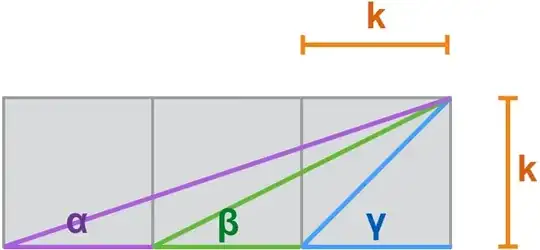Prelude
While studying trigonometry, I came across this very interesting problem. It wasn't very difficult to solve, however it's result was quite interesting. I have given the solution below. Try to solve it yourself before looking.
Problem
The diagram below shows three equal squares, with angels $\alpha$, $\beta$, $\gamma$ as marked. Prove that $ \alpha + \beta = \gamma $.
Hint
If you are not in the midst of a trigonometry course, chances are you will need to see this hint, as it is an uncommon identity.
Hover below to see a hint.
$ \arctan a + \arctan b = \arctan{\frac{a + b}{1 - ab}} $
This identity was solved earlier in the book I found this problem in (see Postscript). Try to prove this identity for yourself, too!
Postscript
This problem came from the textbook: "Trigonometry" by I. M. Gelfand.

:)You can find out here. – Fine Man Jul 02 '16 at 00:31